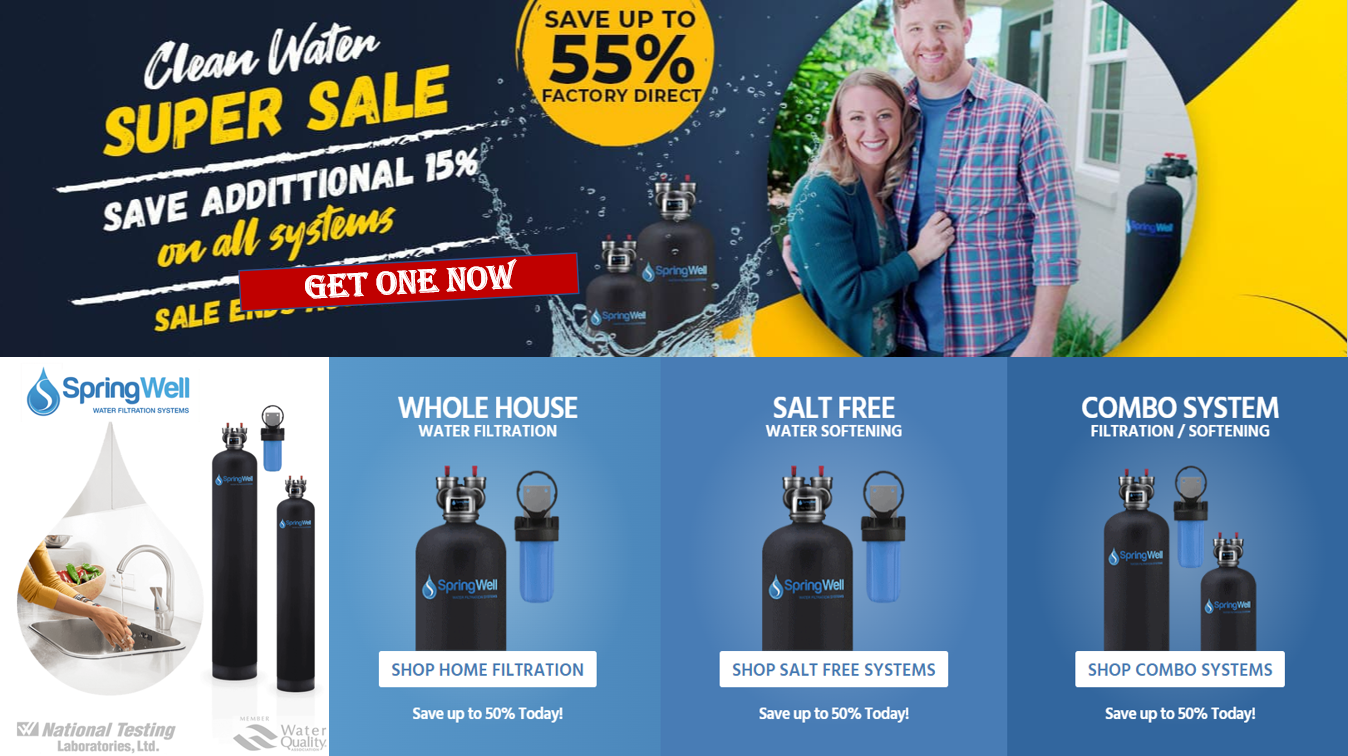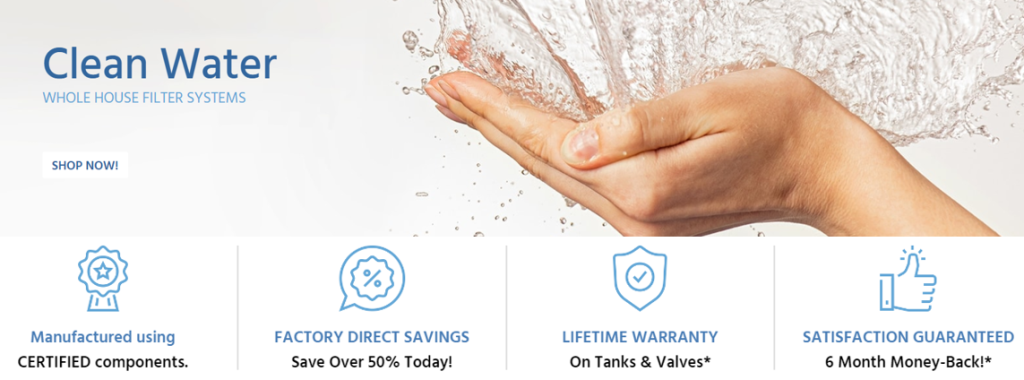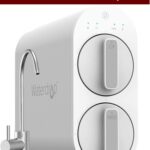Water softeners add salt to water by adding salt to the water that comes into the house.
In 2004, a team of scientists from the University of California, Riverside, developed a water softener that used salt to remove hardness from water. The team was led by Professor of Chemistry Kenneth W. Lee, who is now a member of the National Academy of Engineering. The water softener, which is called the Lee-Riverside Water Softener, uses a process called reverse osmosis to remove hardness from water. The process is similar to the way that a water softener removes salt from water. The Lee-Riverside Water Softener was the first water softener to use salt to remove hardness from water. The Lee-Riverside Water Softener is now used by millions of people around the world to remove hardness from their water.
How Do Water Softeners Work?
Water softeners work by exchanging positive ions for sodium ions.

How do water softeners work?
Install a Home Water Filter & Get "Unlimited Safe Drinking Water" For Decades
Get Upto 55% Discount With a Lifetime Warranty & 6-Months Money Back Guarantee Free Shipping
SpringWell Water Filtration Systems: 100% American-Made & NSF Certified Water Filters and Water Softeners
Water softeners are devices that are used to remove certain minerals from water, such as calcium and magnesium. These minerals can cause hard water, which can make it difficult to clean dishes and clothing and can also lead to plumbing problems. Water softeners work by exchanging the minerals in hard water for sodium or potassium ions. This process is called ion exchange.
There are two types of water softeners: salt-based and salt-free. Salt-based water softeners use salt to remove the minerals from water. Salt-free water softeners use a process called reverse osmosis to filter out the minerals.
Salt-based water softeners are the most common type of water softener. They are typically less expensive than salt-free water softeners and they are effective at removing minerals from water. However, salt-based water softeners can increase the sodium content of water. This is a problem for people who are on a low-sodium diet.
Salt-free water softeners are becoming more popular because they do not add sodium to water. However, salt-free water softeners are not as effective at removing minerals from water as salt-based water softeners.
If you have hard water, you may want to consider installing a water softener. A water softener can make your water easier to use and can prolong the life of your plumbing.
How Do Water Softeners Add Salt To Water?
A water softener uses a process called ion-exchange to remove minerals from water.
Water softeners are devices that are installed on the main water line coming into a house. They are designed to remove minerals that cause water hardness, such as calcium and magnesium. As water passes through the softener, these minerals are exchanged for sodium or potassium ions.
One of the most common questions we get here at Salt Free Water Conditioning is “How does a water softener add salt to water?” The answer is actually quite simple. Water softeners work by exchanging the calcium and magnesium in hard water for sodium or potassium. This process is called ion exchange.
Ion exchange is a process in which one or more ions are exchanged for an equal number of ions of a different charge. In the case of water softeners, the calcium and magnesium ions are exchanged for sodium or potassium ions. The sodium or potassium ions are then flushed out of the system, along with the water, leaving the calcium and magnesium ions behind.
The sodium or potassium ions come from the salt that is added to the water softener. The salt is used to replenish the supply of sodium or potassium ions that are exchanged during the ion exchange process.
Water softeners are an important part of many homes and businesses. They help to remove the minerals that cause water hardness, making it easier and more comfortable to use water.
What Are The Benefits Of Using A Water Softener?
Water softeners remove minerals from water that can cause hard water, and the benefits of using a water softener include having less soap scum, cleaner laundry, and less mineral buildup on fixtures.
There are many benefits of using a water softener, including preventing hard water damage to your home, improving the efficiency of your appliances, and extending the life of your plumbing.
Hard water leaves behind mineral deposits that can damage your plumbing and appliances. Water softeners remove these deposits, preventing hard water damage.
Water softeners also make your appliances more efficient. Hard water requires more energy to heat, so using a water softener can save you money on your energy bills.
Finally, water softeners can extend the life of your plumbing. The deposits left behind by hard water can build up over time, eventually causing your pipes to become clogged. Water softeners remove these deposits, preventing them from building up and clogging your pipes.
If you’re looking for a way to improve the quality of your water and the efficiency of your home, consider investing in a water softener.
How Often Does A Water Softener Need To Be Regenerated?
A water softener needs to be regenerated about once a week.
How often does a water softener need to be regenerated?
The answer to this question depends on a few factors, but the most important factor is the hardness of your water. If you have very hard water, you may need to regenerate your water softener every week or two. If you have only moderately hard water, you may be able to get by with regenerating your water softener every month or two.
In addition to the hardness of your water, the size of your water softener and the number of people in your household also play a role in how often you need to regenerate your water softener. A larger water softener or a household with more people will need to be regenerated more often than a smaller water softener or a household with fewer people.
To regenerate your water softener, you’ll need to add salt to the salt tank. The amount of salt you’ll need to add will depend on the size of your water softener. Once you’ve added the salt, you’ll need to run water through the water softener for a few minutes to dissolve the salt.
After the salt has dissolved, you’ll need to flush the water softener to remove any excess salt. To do this, you’ll need to run water through the water softener for a few minutes. Once the water has been flushed, you can turn the water softener back on and it will be ready to use.
If you have hard water, you may need to regenerate your water softener more often than if you have soft water. However, regenerating your water softener is a simple process that only takes a few minutes.
How Much Salt Does A Water Softener Use?
A water softener uses salt to remove minerals from water.
Water softeners are devices that are installed to homes with hard water. Hard water contains a high concentration of minerals, including calcium and magnesium. These minerals can cause a number of problems in the home, such as making it difficult to get clean dishes and clothing. A water softener removes these minerals from the water, making it easier to use and preventing these problems.
So, how much salt does a water softener use? It really depends on the size of the unit and the hardness of the water. A water softener typically uses between 2 and 4 pounds of salt per week. For example, a family of four that uses a water softener with a 32,000-grain capacity would use approximately 2 pounds of salt per week.
In general, the harder the water, the more salt it will use. Water softeners work by exchanging the calcium and magnesium ions in hard water for sodium ions. The sodium ions then attach to the resin beads in the softener, and the calcium and magnesium ions are flushed out of the system. As the water softener regenerates, it replenishes the sodium ions by using salt.
If you have hard water, a water softener can be a great way to improve your home’s water quality. It’s important to choose the right unit for your home and to understand how much salt it will use. By doing so, you can enjoy the benefits of soft water without having to worry about the cost or maintenance of the unit.
FAQ
What Are The Consequences Of Not Using A Water Softener?
What Are The Consequences Of Using Too Much Salt In A Water Softener?
How Can I Tell If My Water Softener Is Working Properly?
What Should I Do If I Have A Problem With My Water Softener?
If you are still unclear about how water softeners work, please feel free to leave a comment below.


